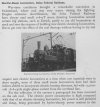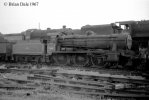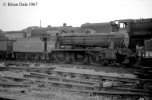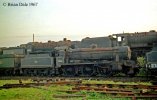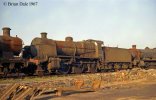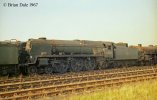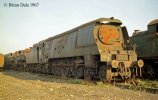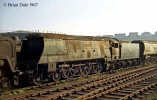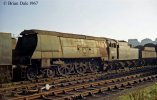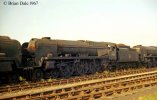However, classic cars converted to battery power. That's anathema to me, personally. Even now my driving tends to be in big chunks and there's no car yet with the range. I certainly don't want to have to stop for four hours to top up the batteries. They may be good for shopping and commuter runs but what about the environmental cost of disposing of old batteries? And will an electric car with knackered batteries be worth anything? Surely the investment should be in to hydrogen and fuel cell research.
off piste again…
I think it’s likely that batteries are going to be part of the mobility solution whether or not hydrogen is used as fuel.
Experiments with hydrogen in IC engines were being run at a fleet level by Magna Steyr and BMW back in the late noughties but despite eliminating CO2 the exhaust still contains nitrogen oxides due to combustion, though I guess these could be dealt with by catalysts, but this pathway seems to have died out, I haven’t heard of any large scale projects since then.
The other approach to hydrogen is fuel cells, which run cold (compared to IC engines) and produce electricity directly with only water as the exhaust. The issue with fuel cells is that they do not take kindly to transients, indeed, they run most efficiently at a constant load, which simply does not suit road applications - so the current solution is to use the fuel cell to charge the batteries, and the batteries as a store which can provide the brief bursts of high power demand, and importantly, which can recapture much of the braking energy that would otherwise be wasted.
Alternatively, a flywheel could be used as the energy store, not as good for efficiency, but better power handling than a battery. Possibly a good solution where it’s only transients ( acceleration, braking ) that need to be managed.
Additionally, there is an infrastructure issue: we simply do not have the means to generate and distribute hydrogen around the country. It’s difficult, slippery stuff to store (the BMWs I referred to above had massive stainless thermos flasks in the boot, the H2 was stored as slush) and the tendency would be to make it locally using electricity (hopefully entirely green, there’s no point in burning fuel to make electricity & CO2 if you are trying to eliminate tailpipe CO2) and whilst pilot plants exist, I suspect it would cost a lot of capital to install multiple H2 generators in every town & city.
I doubt you’d need to stop for four hours in a journey to charge, maybe a couple of half hour stops, though that might still be an inconvenience too far. And always assuming the charging stations work, and are not beset by queues. Home electric charging is pretty good for those of us with a driveway. If you’re one of the millions whose parking is on the street, your charging options might be less favourable.
And then there’s the question of “where’s all this electricity coming from?” UK transport used 36 million tons of oil in 2018 if I’m reading the report correctly. That’s a lot of generating capacity, which might pose another capital problem.

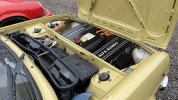
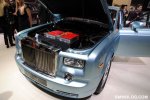
 . Why is the Morris Minor so collectable? I suggest because it was the first car for so many. I disliked mine with a passion..... However, I wish I'd kept my Honda S800. I couldn't afford to do so and buy another car and a house, so it had to go.
. Why is the Morris Minor so collectable? I suggest because it was the first car for so many. I disliked mine with a passion..... However, I wish I'd kept my Honda S800. I couldn't afford to do so and buy another car and a house, so it had to go.
